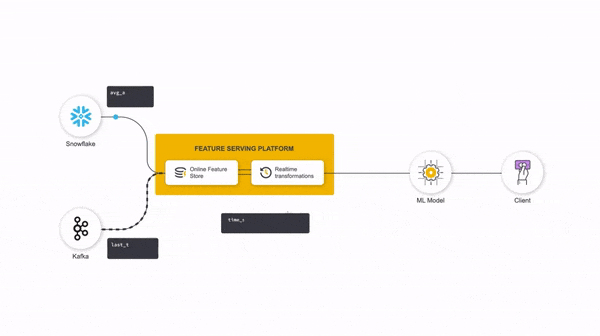Businesses have recognized the latent power that lies in machine learning and AI technology. Consequently, they are investing heavily in ML and AI to gain a competitive edge in the new market. A BCG survey states that at least six out of ten businesses are developing algorithms and hiring data scientists in the ongoing machine learning and AI trend.
Unfortunately, only one in ten of these businesses extract much return on investments from their AI and ML projects. A significant reason most machine learning projects fail is the wide chasm between data science and IT practitioners.
IT technologists burn the midnight oil making ML projects usable and stable, while the data scientist is an experimenter that breaks and iterates projects for maximum efficiency. That said, your business can peel away from the crowd and accelerate its AI innovations development by embracing machine learning operation (MLOps) tools.

The Qwak platform, for instance, will unify your data science and IT teams, creating allied ML project data and engineering operations. Qwak eliminates all engineering inefficiencies from an ML project's code, data, and configuration processes. Consequently, your ML project will not fall by the wayside due to friction amongst your teams. Instead, Qwak fulfills its mandate by supporting your ML project's build, deployment, maintenance, and monitoring phases on one automated and streamlined platform.
Qwak Platform Features
While there are other machine learning (ML) production platforms such as Amazon SageMaker, Vertex AI from Google, MLflow, and IBM Watson, Qwak's state-of-the-art features are a cut above the rest. To illustrate this point, Qwak's Build feature can transform your project's code into a production-grade self-learning bot in minutes. Build is the Qwak ML project entry point. It will standardize your project's code, data, and parameters and define your model creation logic. On top of that, Build can function as an ML model training tool. If you have a pre-trained model, load its data on Qwak and speed up its deployment date.
The Qwak build tool has an easy-to-use code screen that will highlight your project's full code and other model builds. Qwak's Serving feature, on the other hand, is a top-of-the-line ML project management and deployment tool.
Qwak Serving supports one click deployment of ML models via a command-line interface (CLI), user interface (UI), or the Qwak SDK. This potent tool's one-click ML project deployment features eliminates friction between engineers and data science teams, creating scalable and repeatable AI projects. Serving's other features include alerting, analytics, and logging functions.
Into the bargain is Qwak’s Data Lake, where your team can collect, store and analyze data and then collaborate on its management. A data lake supports the seamless transformation of raw, unstructured data to SQL analytics, machine learning, and data science-ready format.
Unlike other machine learning (ML) production platforms, the Data Lake is an off-the-shelf product, part, and parcel of the Qwak platform. As a result, your teams can store massive amounts of raw data on its object storage and flat architecture systems for easy access, more affordably.
Last but not least, the Qwak machine learning (ML) production platform has a Feature Store and Automations features. The Feature Store enhances collaboration between all ML teams creating a single source of truth for all ML features. The Qwak Automations feature, on the other hand, configures ML project triggers, enhancing ML project operational surveillance in the production environment.
Conclusion
The highest performing AI teams have robust MLOps tools such as Qwak in their toolbox. Qwak will train, test, and deploy your ML model much faster, predictably, and repeatedly achieving higher returns in ML investments.
